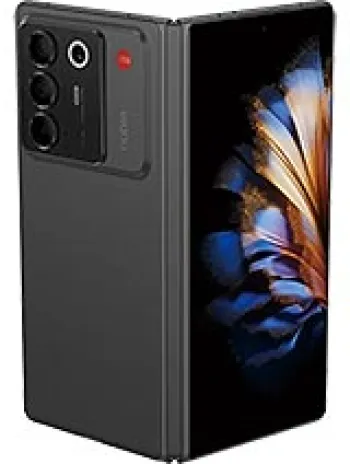
Design and Build
The ZTE Nubia N1 boasts a design that exudes simplicity and elegance. With dimensions of 150.9 x 75 x 8.9 mm and a weight of 190 g, the device is relatively comfortable to hold even during extended use. The hybrid dual SIM functionality adds a layer of convenience, allowing users to manage two numbers simultaneously.
Display
The device features a 5.5-inch IPS LCD display that offers a resolution of 1080 x 1920 pixels. This translates to a pixel density of approximately 401 ppi, ensuring sharp and vibrant images. The screen-to-body ratio of about 73.7% gives the phone a modern look, while the Corning Gorilla Glass 3 provides added durability against scratches and minor impacts.
Performance
Under the hood, the Nubia N1 is powered by the Mediatek MT6755 Helio P10 chipset, constructed on the 28 nm process. The octa-core CPU is divided into two clusters: four cores clocked at 2.0 GHz Cortex-A53 and four at 1.0 GHz Cortex-A53, offering a balanced performance for everyday tasks. The Mali-T860MP2 GPU, although not aimed at hardcore gaming, supports moderate gaming sessions and smooth video playback.
Memory and Storage
The Nubia N1 comes with two storage variants: 32GB and 64GB, both coupled with 3GB of RAM. This amount of RAM is adequate for running multiple apps simultaneously without major hiccups. Additionally, the device supports microSDXC, although it utilizes a shared SIM slot, offering expanded storage capabilities for users with extensive media libraries.
Camera
The Nubia N1 includes a 13MP rear camera with an aperture of f/2.2. It supports features like PDAF (Phase Detection Auto Focus), LED flash, panorama, and HDR, helping users capture decent quality photos in various lighting conditions. The camera supports video recording at 1080p@30fps. On the front, it also features a 13MP selfie camera, ensuring clear and detailed selfies and video calls, also capable of recording 1080p videos.
Battery Life
One of the standout features of the Nubia N1 is its 5000 mAh non-removable Li-Po battery. This robust battery offers an impressive standby time of up to 480 hours and a talk time of up to 25 hours, making it an ideal choice for heavy users or those frequently travelling. Music lovers can also enjoy up to 70 hours of music playback on a single charge.
Software and User Interface
Running on Android 6.0 Marshmallow, the device incorporates Nubia's UI 4, providing a unique skin over the stock Android. While the operating system is somewhat dated, the custom interface offers additional features and tweaks that cater to the brand's loyal user base, enhancing user experience through thoughtful design choices and added functionalities.
Connectivity and Networking
The Nubia N1 supports an array of network technologies including GSM, CDMA, HSPA, EVDO, and LTE, providing a wide coverage range for users globally. It includes Wi-Fi 802.11 a/b/g/n/ac with dual-band support, Bluetooth 4.1 with A2DP and LE, as well as GPS featuring GLONASS and Beidou. However, it lacks NFC but compensates with an FM radio and USB Type-C with OTG support.
Additional Features
Among the notable features of the Nubia N1 is the fingerprint sensor mounted at the rear, offering convenient and secure unlocking of the device. Additional sensors like an accelerometer, gyro, proximity sensor, and compass provide enhanced functionality for various applications and user needs.
Colors and Pricing
The device is available in two elegant color options: Silver and Gold, catering to different aesthetic preferences. At its launch, the Nubia N1 was priced at approximately 230 EUR, positioning it as a competitive option within the mid-range smartphone market.
Conclusion
The ZTE Nubia N1 may have been discontinued, but it remains notable for its solid build, robust battery, and decent camera capabilities at a mid-range price point. While the software could benefit from updates, and the hardware might not compete with modern flagships, it served as a reliable and value-for-money option during its time on the market, particularly for users prioritizing battery life and balanced performance.
Key Features of ZTE nubia N1
- Supports GSM, CDMA, HSPA, EVDO, and LTE Technologies
- 5.5-inch IPS LCD Display with Full HD Resolution
- Protected by Corning Gorilla Glass 3
- Powered by Mediatek MT6755 Helio P10 Chipset
- Octa-core Processor (4x2.0 GHz Cortex-A53 & 4x1.0 GHz Cortex-A53)
- Comes with 32GB/3GB RAM and 64GB/3GB RAM Variants
- Expandable Storage via microSDXC (using shared SIM slot)
- 13 MP Main and Selfie Cameras with 1080p Video Recording
- Fingerprint Sensor (Rear-mounted) and Various Other Sensors
- 5000 mAh Non-removable Battery Supporting Long Stand-by and Talk Time
- Equipped with USB Type-C and OTG Support
- Includes Wi-Fi 802.11 a/b/g/n/ac, Bluetooth 4.1, GPS with GLONASS, and Beidou
- Available in Silver and Gold Colors
- Competitive Price of Approximately 230 EUR
Drawbacks of ZTE nubia N1
- Discontinued: The device is no longer available for purchase as it has been discontinued.
- Outdated Operating System: Runs on Android 6 (Marshmallow), which is an older version and may lack support for newer applications and features.
- No NFC: Lacks NFC connectivity, which means it cannot be used for contactless payments or other NFC-enabled applications.
- Hybrid SIM Slot: The use of a hybrid SIM slot means that users must choose between a second SIM or expandable storage, not both simultaneously.
- Heavy Weight: Weighing 190 g, it might feel bulky to some users when compared to more modern lightweight smartphones.
- Limited GPU: Equipped with a Mali-T860MP2, which may not handle high-end graphics-intensive tasks very well.

View Also
More Phones
All Rights Reserved +14266 Phones © Mobilawy 2025

























